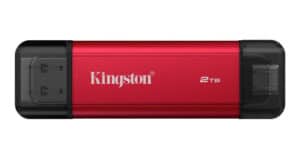The Force Upgrade Model: Analyzing Apple’s Pricing Strategy for MacBooks
Apple’s MacBooks have long been hailed for their sleek design, user-friendly interface, and robust performance. However, an increasing number of consumers are beginning to peel back the layers of Apple’s pricing strategy, particularly when it comes to the entry-level MacBook models. The so-called "force upgrade model" has sparked a lively discussion among tech enthusiasts and potential buyers regarding the true cost of ownership. In this blog post, we’ll break down this model, what it means for consumers, and alternative options available in the market.
Understanding the Force Upgrade Model
At first glance, Apple’s entry-level MacBook appears to be an enticing deal. It boasts a competitive starting price point, making it accessible to students, professionals, and casual users alike. However, once customers begin to consider upgrades—whether for RAM or storage—they quickly find themselves in a tricky situation.
When you opt for a storage or RAM upgrade, it’s not just the additional memory or space that you’re buying. The MacBook configuration changes dramatically, often resulting in upgrades to components that you may not even want. This new configuration comes with a higher price tag, which begs the question: Why does this happen?
All-In-One Components
One crucial aspect of the MacBook’s design contributes to this issue: most components are built into the device itself. Unlike some laptops that allow for user upgrades—where you can swap out RAM sticks or replace an old hard drive—MacBook components such as RAM and SSD are soldered onto the logic board. This means that upgrades need to be decided upon at the point of purchase, effectively forcing buyers to pay for specifications they might not require or use.
The High Cost of Later Upgrades
If you’re lured in by the base-level pricing but later decide to upgrade, the only feasible option is to buy an entirely new MacBook—an expensive proposition. Apple has designed their systems in a way that makes upgrading practically impossible after the fact; as a result, you’re incentivized to spend more money upfront.
This setup positions Apple products as premium offerings, but with a caveat: they lock consumers into their ecosystem and force longer-term financial commitments. By making the base model seem affordable but including hidden costs when upgrades are needed, customers may find themselves trapped in a cycle of spending more to get the features they want.
How Does This Compare with Competitors?
Understanding the force upgrade model becomes even clearer when we compare Apple’s approach to that of its competitors. Many laptop manufacturers allow users to customize their machines at purchase, offering more granular control over which components are upgraded.
For instance, brands like Dell, Lenovo, and HP often provide the option to add storage or RAM without altering other key components, thus avoiding the inflated costs associated with Apple’s upgrade model. This competitive advantage not only appeals to budget-conscious consumers but also those who prefer to tailor their devices specifically to their needs.
The Long-Term Relationship with Apple Devices
One of the key selling points for Apple is the seamless experience it promotes among its suite of devices. This amalgamation of hardware and software creates a loyal user base that appreciates the integration across devices. However, this loyalty comes at a price.
The force upgrade model not only penalizes consumers financially but also positions them in a cycle of obligatory upgrades. If you’re invested in the Apple ecosystem—meaning you own an iPhone, iPad, or other Apple devices—it can be challenging to switch to alternative brands that offer a more customizable experience without incurring significant costs in terms of time and data transfer.
Potential Strategies for Consumers
So, what can consumers do to navigate this treacherous landscape of forced upgrades? Here are some strategies:
Assess Your Needs Thoroughly: Before purchasing a MacBook, take a moment to evaluate your usage patterns. If you typically use resource-intensive applications like video editing software or 3D modeling programs, it might make sense to save some money upfront for necessary upgrades.
Consider Refurbished Models: Apple offers refurbished devices that come with a warranty. These can provide a more cost-effective option, especially if you’re looking for a higher-spec machine without the premium price tag of a brand-new model.
Look at Alternatives: If you’re open to exploring different brands, consider laptops from companies like Dell, Lenovo, or HP that offer much more flexibility in customization.
- Wait for a Sale: Sometimes, Apple’s pricing strategy can seem rigid, but it’s worth waiting for promotions or education discounts to make a more reasonable financial commitment.
Final Thoughts
The force upgrade model employed by Apple presents both advantages and disadvantages. While the seamless integration of hardware and software may be appealing to many users, the financial implications of forced upgrades represent a darker aspect of Apple’s pricing strategy. By being aware of these concerns and exploring alternatives, consumers can make informed decisions, ensuring they get the best value for their investment while enjoying the benefits that accompany smart technology choices.
As the tech landscape evolves, it will be interesting to see if other brands adopt more rigid pricing models or if Apple will adapt to changing consumer demands. Until then, the caveat emptor remains: buyer beware; the allurement of that entry-level MacBook comes with higher hidden costs than the initial price tag suggests.





